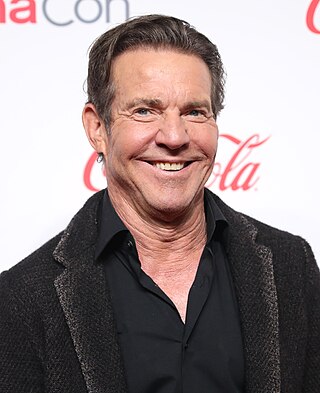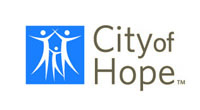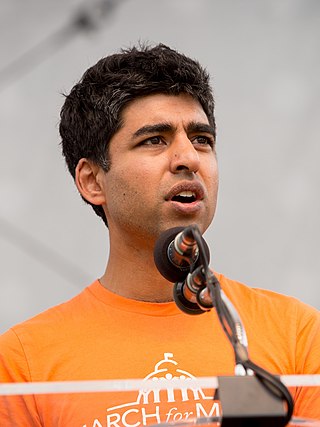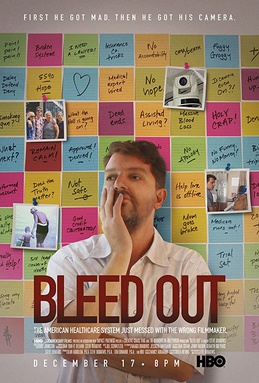
Mayo Clinic is a private American academic medical center focused on integrated healthcare, education, and research. It maintains three major campuses in Rochester, Minnesota; Jacksonville, Florida; and Phoenix/Scottsdale, Arizona.

Dennis William Quaid is an American actor. He is known for his starring roles in Breaking Away (1979), The Right Stuff (1983), The Big Easy (1986), Innerspace (1987), Great Balls of Fire! (1989), Dragonheart (1996), The Parent Trap (1998), Frequency (2000), The Rookie (2002), The Day After Tomorrow (2004), In Good Company (2004), Flight of the Phoenix (2004), Yours, Mine & Ours (2005), and Vantage Point (2008). Quaid received a Golden Globe Award nomination for his role in Far from Heaven (2002). In 2009, The Guardian named him one of the best actors never to have received an Academy Award nomination.
Terminal illness or end-stage disease is a disease that cannot be cured or adequately treated and is expected to result in the death of the patient. This term is more commonly used for progressive diseases such as cancer, dementia, advanced heart disease, and for HIV/AIDS, or long COVID in bad cases, rather than for injury. In popular use, it indicates a disease that will progress until death with near absolute certainty, regardless of treatment. A patient who has such an illness may be referred to as a terminal patient, terminally ill or simply as being terminal. There is no standardized life expectancy for a patient to be considered terminal, although it is generally months or less. An illness which is lifelong but not fatal is called a chronic condition.
A medical error is a preventable adverse effect of care ("iatrogenesis"), whether or not it is evident or harmful to the patient. This might include an inaccurate or incomplete diagnosis or treatment of a disease, injury, syndrome, behavior, infection, or other ailments.
Patient safety is a discipline that emphasizes safety in health care through the prevention, reduction, reporting and analysis of error and other types of unnecessary harm that often lead to adverse patient events. The magnitude of avoidable adverse events, often known as patient safety incidents, experienced by patients was not well known until the 1990s, when multiple countries reported significant numbers of patients harmed and killed by medical errors. Recognizing that healthcare errors impact 1 in every 10 patients around the world, the World Health Organization (WHO) calls patient safety an endemic concern. Indeed, patient safety has emerged as a distinct healthcare discipline supported by an immature yet developing scientific framework. There is a significant transdisciplinary body of theoretical and research literature that informs the science of patient safety with mobile health apps being a growing area of research.
A patient safety organization (PSO) is a group, institution, or association that improves medical care by reducing medical errors. Common functions of patient safety organizations are data collection, analysis, reporting, education, funding, and advocacy. A PSO differs from a Federally designed Patient Safety Organization (PSO), which provides health care providers in the U.S. privilege and confidentiality protections for efforts to improve patient safety and the quality of patient care delivery

City of Hope is a private, non-profit clinical research center, hospital and graduate school located in Duarte, California, United States. The center's main campus resides on 110 acres (45 ha) of land adjacent to the boundaries of Duarte and Irwindale, with a network of clinical practice locations throughout Southern California, satellite offices in Monrovia and Irwindale, and regional fundraising offices throughout the United States.
John J. Nance is an American pilot, attorney, aviation and healthcare safety analyst, and author.

Peter J. Pronovost is Chief Quality and Transformation Officer at University Hospitals Cleveland Medical Center, the main affiliate of the Case Western Reserve University School of Medicine.

Fatal Care: Survive in the U.S. Health System is a book about preventable medical errors written by Sanjaya Kumar, president and chief medical officer of Quantros, Milpitas, California. Fatal Care was published in April 2008 by IGI Publishing, Minneapolis, Minnesota.
Health information technology (HIT) is health technology, particularly information technology, applied to health and health care. It supports health information management across computerized systems and the secure exchange of health information between consumers, providers, payers, and quality monitors. Based on a 2008 report on a small series of studies conducted at four sites that provide ambulatory care – three U.S. medical centers and one in the Netherlands, the use of electronic health records (EHRs) was viewed as the most promising tool for improving the overall quality, safety and efficiency of the health delivery system.

Richard Davies deBronkart Jr, widely known as e-Patient Dave, is a cancer patient and blogger who, in 2009, became a noted activist for healthcare transformation through participatory medicine and personal health data rights.

Robert M. "Bob" Wachter is an academic physician and author. He is on the faculty of University of California, San Francisco, where he is chairman of the Department of Medicine, the Lynne and Marc Benioff Endowed Chair in Hospital Medicine, and the Holly Smith Distinguished Professor in Science and Medicine. He is generally regarded as the academic leader of the hospitalist movement, the fastest growing specialty in the history of modern medicine. He and a colleague, Lee Goldman, are known for coining the term "hospitalist" in a 1996 New England Journal of Medicine article.
The inverse benefit law states that the ratio of benefits to harms among patients taking new drugs tends to vary inversely with how extensively a drug is marketed. Two Americans, Howard Brody and Donald Light, have defined the inverse benefit law, inspired by Tudor Hart's inverse care law.

Neel Shah is an American physician, Harvard University assistant professor, Chief Medical Officer of Maven Clinic, and founder of the nonprofit organizations Costs of Care and March for Moms. Shah is married to MIT Professor Julie Shah.

David Bates is an American physician, biomedical informatician, and professor, known for his work regarding the use of health information technology (HIT) to improve the safety and quality of healthcare, in particular by using clinical decision support. Bates has done work in the area of medication safety. He began by describing the epidemiology of harm caused by medications, first in hospitalized patients and then in other settings such as the home and nursing homes.
Suzanne Gordon is an American journalist and author who writes about healthcare delivery and health care systems and patient safety and nursing. Gordon coined the term "Team Intelligence," to describe the constellation of skills and knowledge needed to build the kind of teams upon which patient safety depends. Her work includes, First Do Less Harm: Confronting the Inconvenient Problems of Patient Safety, a collection of essays edited with Ross Koppel and Beyond the Checklist: What Else Health Care Can Learn from Aviation Safety and Teamwork, written with commercial pilot Patrick Mendenhall and medical educator Bonnie Blair O’Connor, with a foreword by Captain Chesley "Sully" Sullenberger.
Surfing the Healthcare Tsunami: Bring Your Best Board is a made for television documentary that explores medical errors and waste in healthcare. It was broadcast globally on the Discovery Channel in 2012. It references federally-funded studies in the United States and news footage to support the claim that healthcare workers are afraid to speak up when medical errors occur in hospitals. The documentary covers solutions to preventable system failures causing harm. It aired four times on the Discovery Channel commercial-free in North America, Germany, the U.K., France, and other Western European countries including Sweden. It premiered at the National Press Club on April 27, 2012, after a short speech by Captain Sully Sullenberger who was featured in the film. The film was screened at the Texas Health Care Quality Improvement Awards on May 3, 2012.
The Medical Tactical Certificate Training Program, also known as Med Tac, is a global bystander rescue care training program that focuses on life-saving actions that can be performed by non-medical bystanders for the eight leading preventable causes of death to children, youth, and adults. In urban areas in the United States, professional first responders arrive at the scene of an emergency after approximately 10 minutes. Immediate rescue care by bystanders is most effective within three minutes of an event. Treatment within this time has been found to have a significant effect on rates of survival and permanent harm. Created and expanded upon after the dramatic increase in active shooter and terrorism events, Med Tac integrates the American Heart Association Heartsaver CPR/AED Training Program, or the American Red Cross equivalent training, and the Stop the Bleed Program sponsored by the United States Department of Homeland Security and American College of Surgeons.

Bleed Out is a 2018 HBO feature documentary film that explores how an American family deals with the effects of medical malpractice. The film revolves around a ten-year journey, captured through archival footage, spy-cams, and interviews. Writer-director Steve Burrows reveals the ways his mother, Judie Burrows, was afflicted for the rest of her life due to a mistake during a partial hip surgery procedure.










